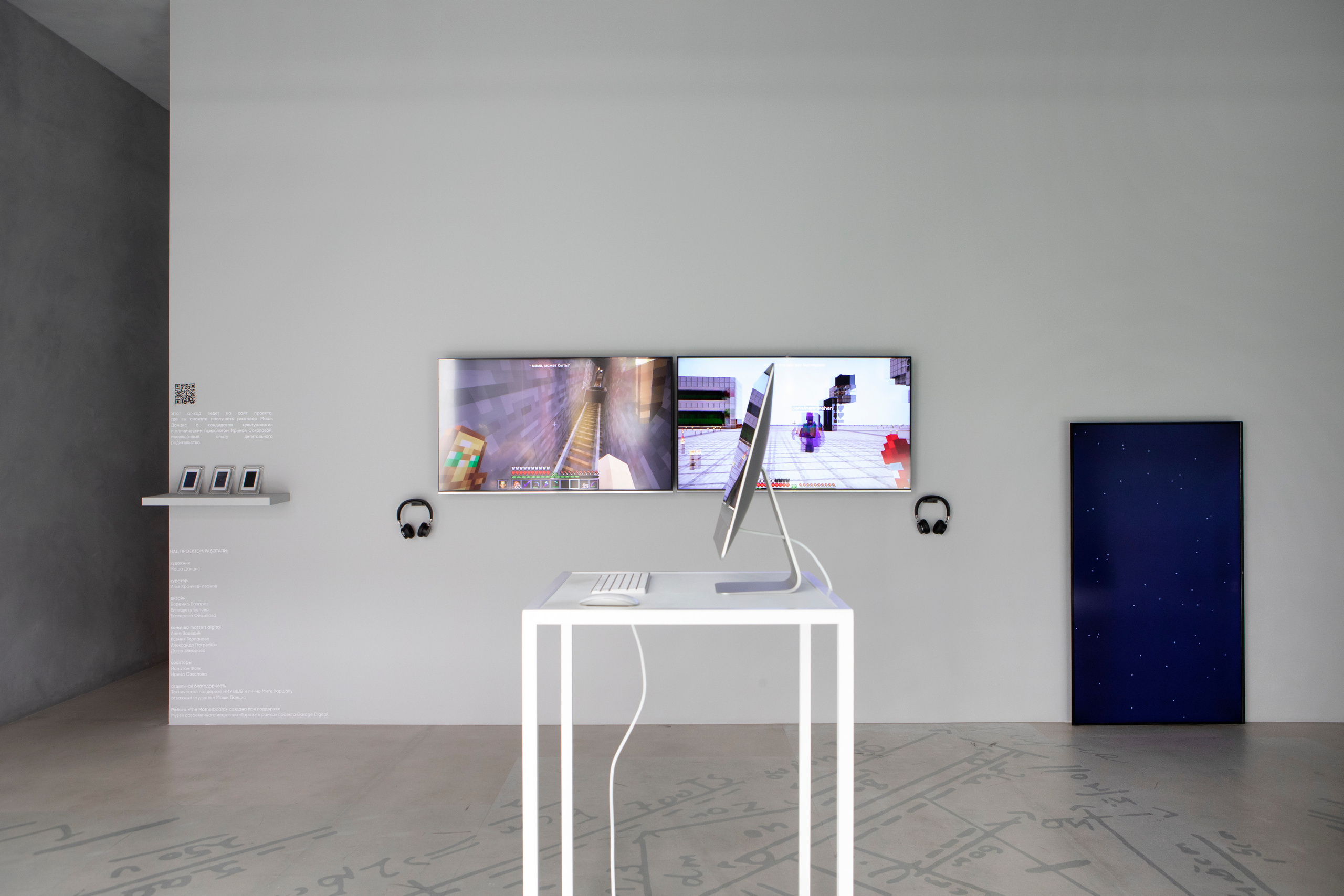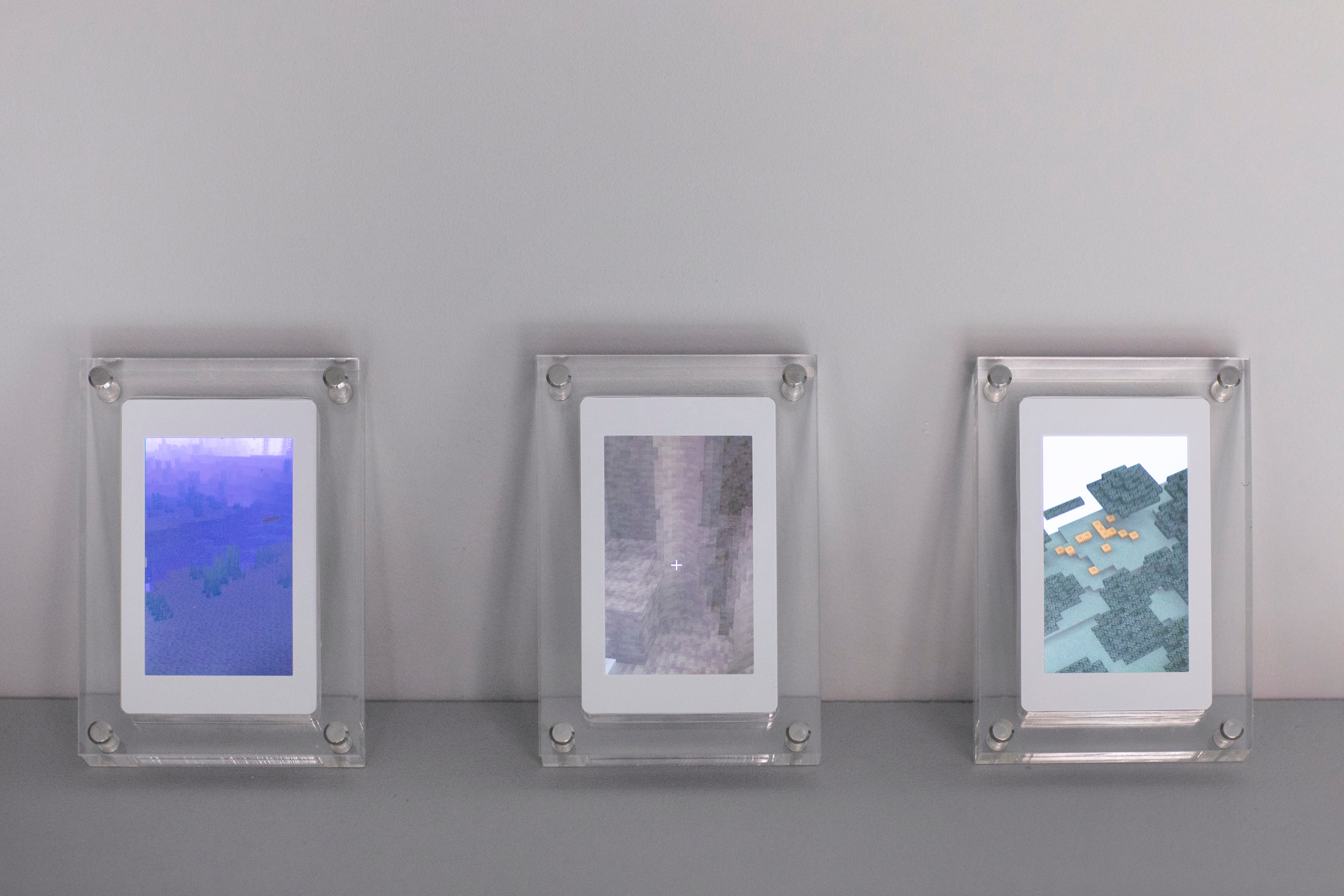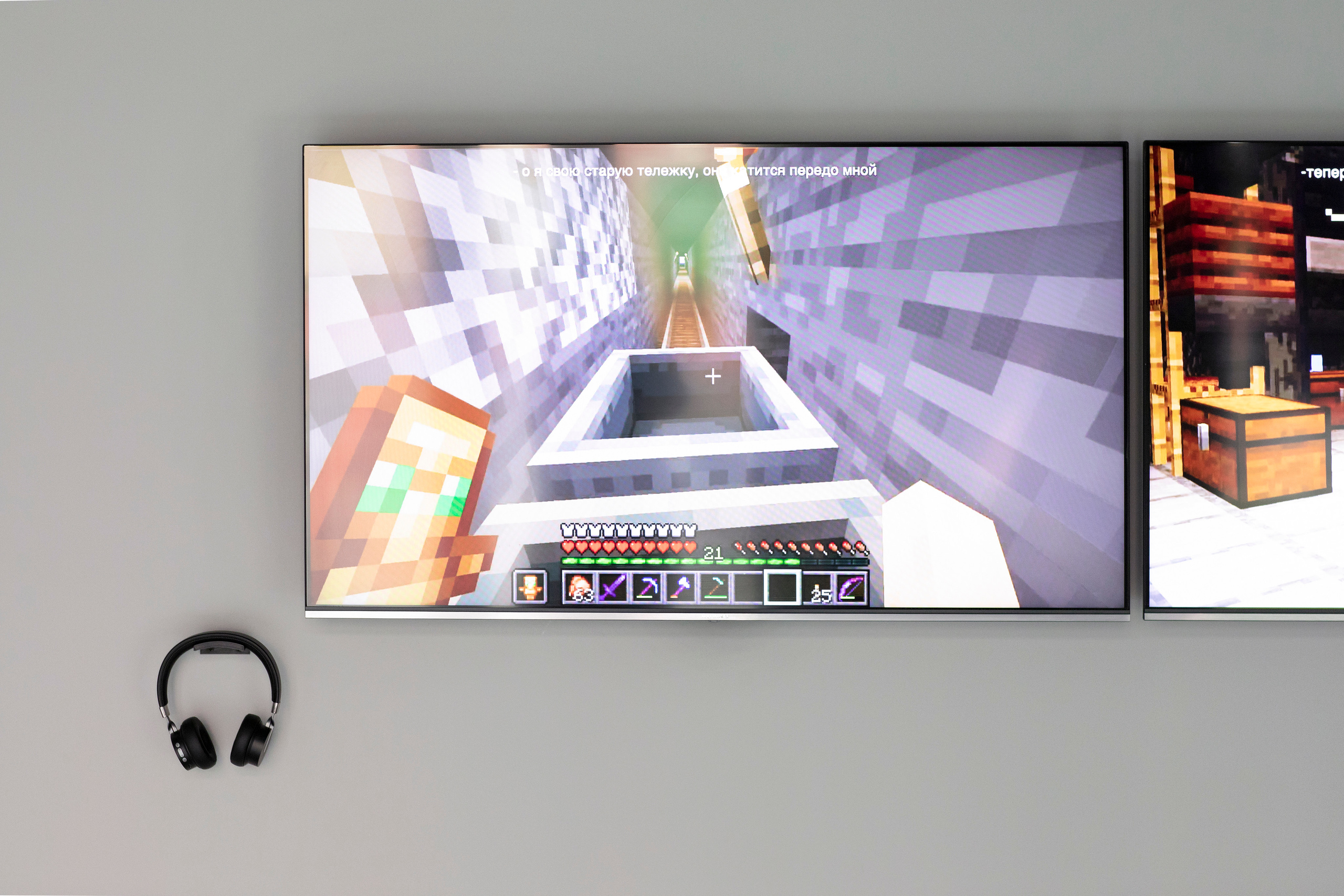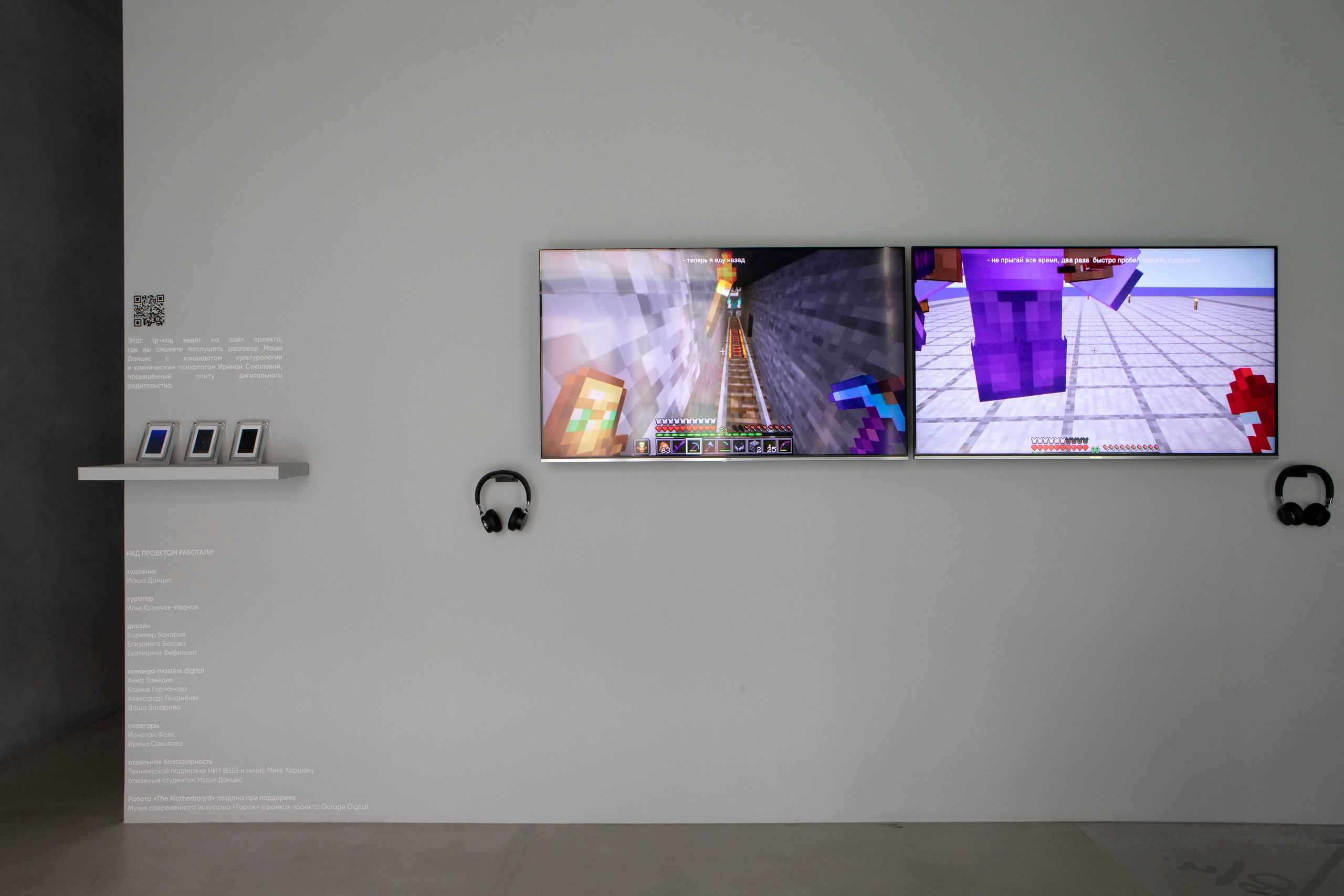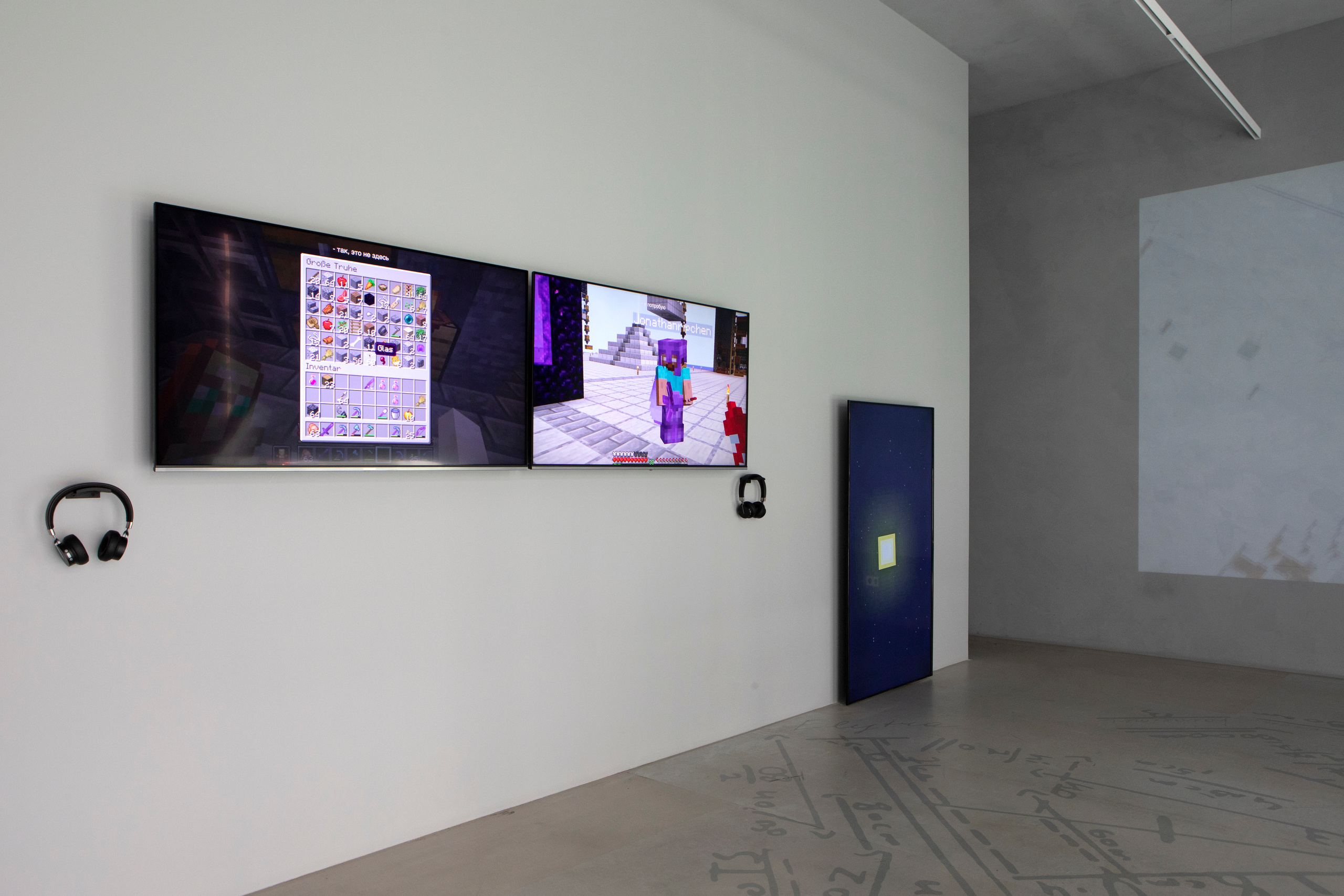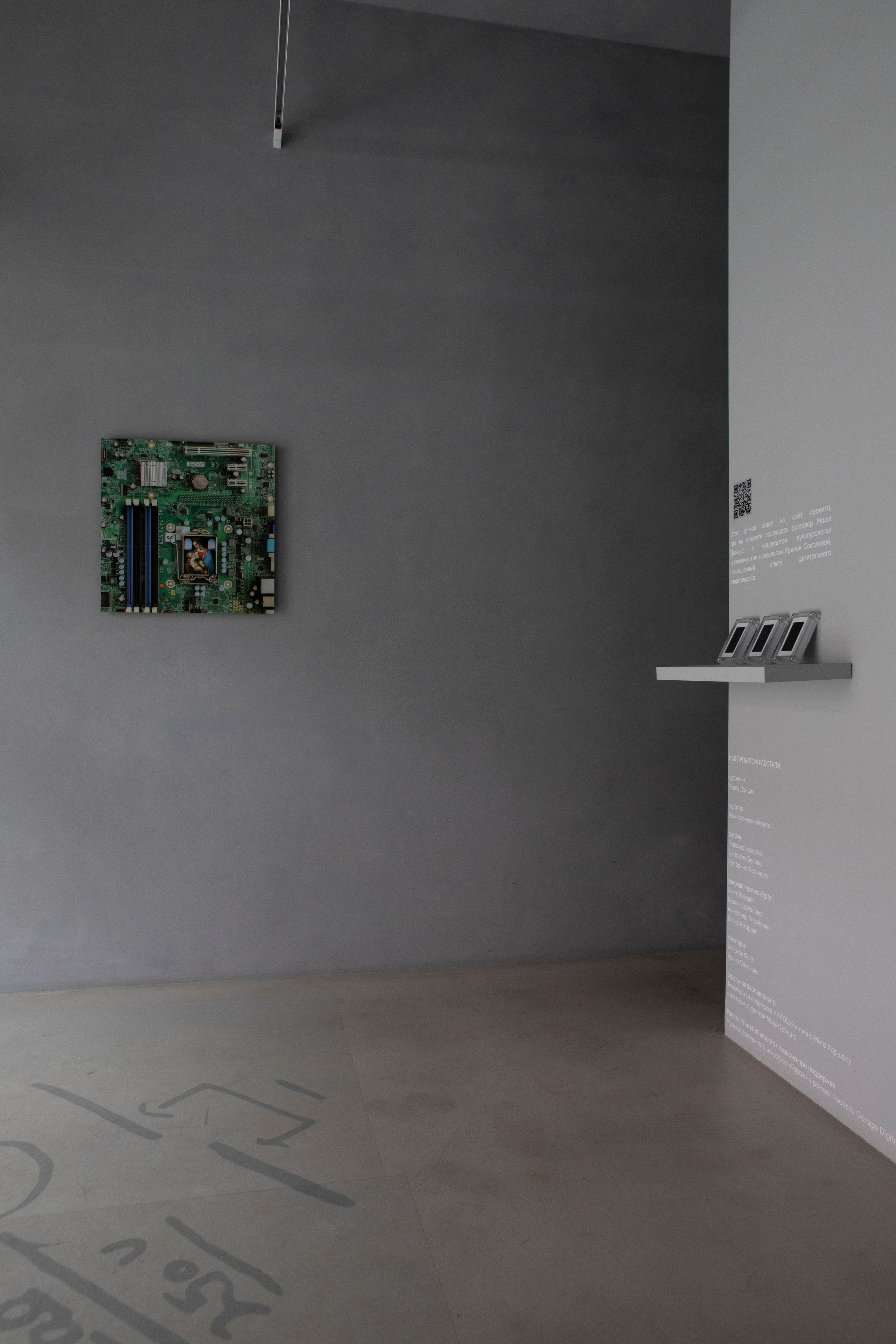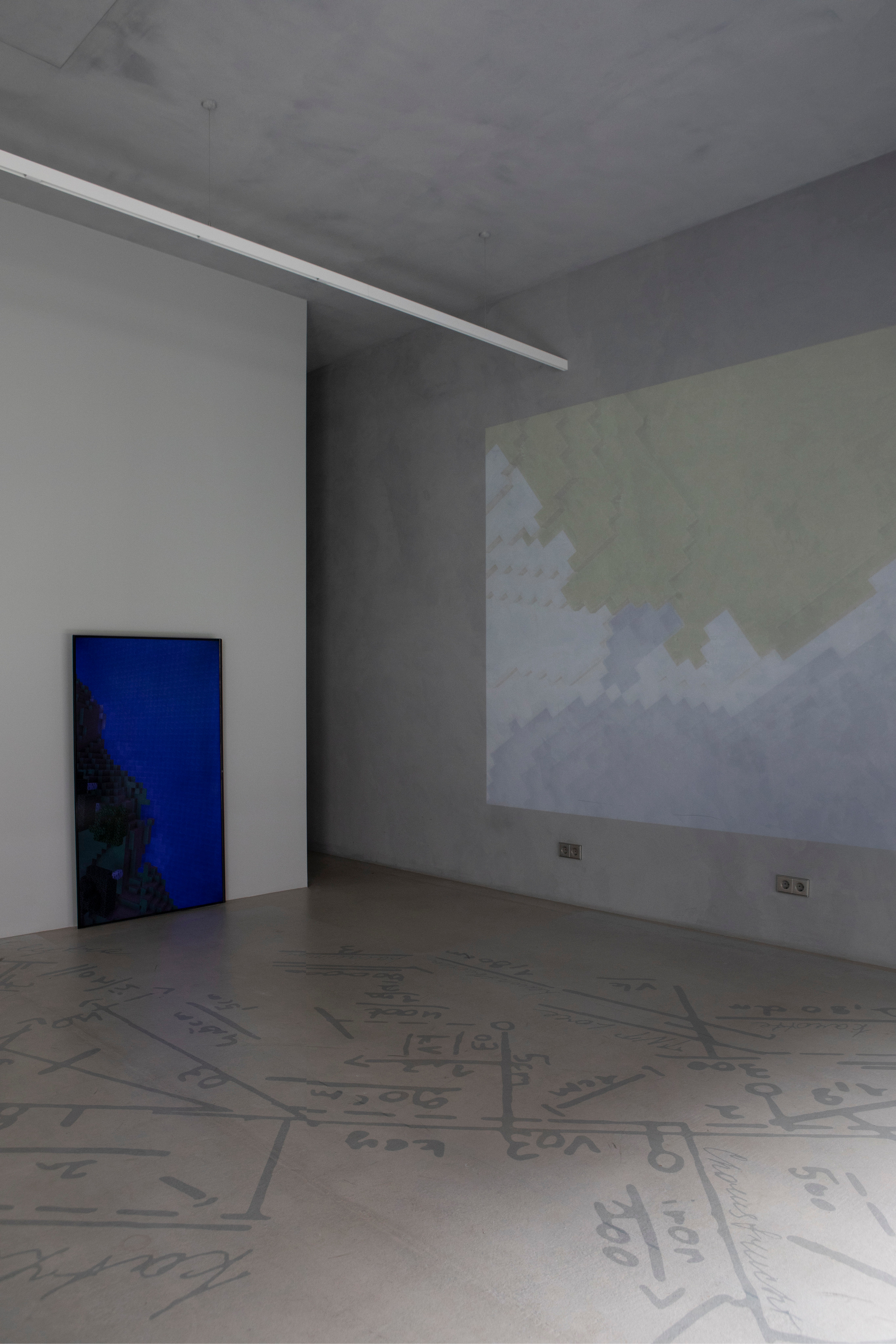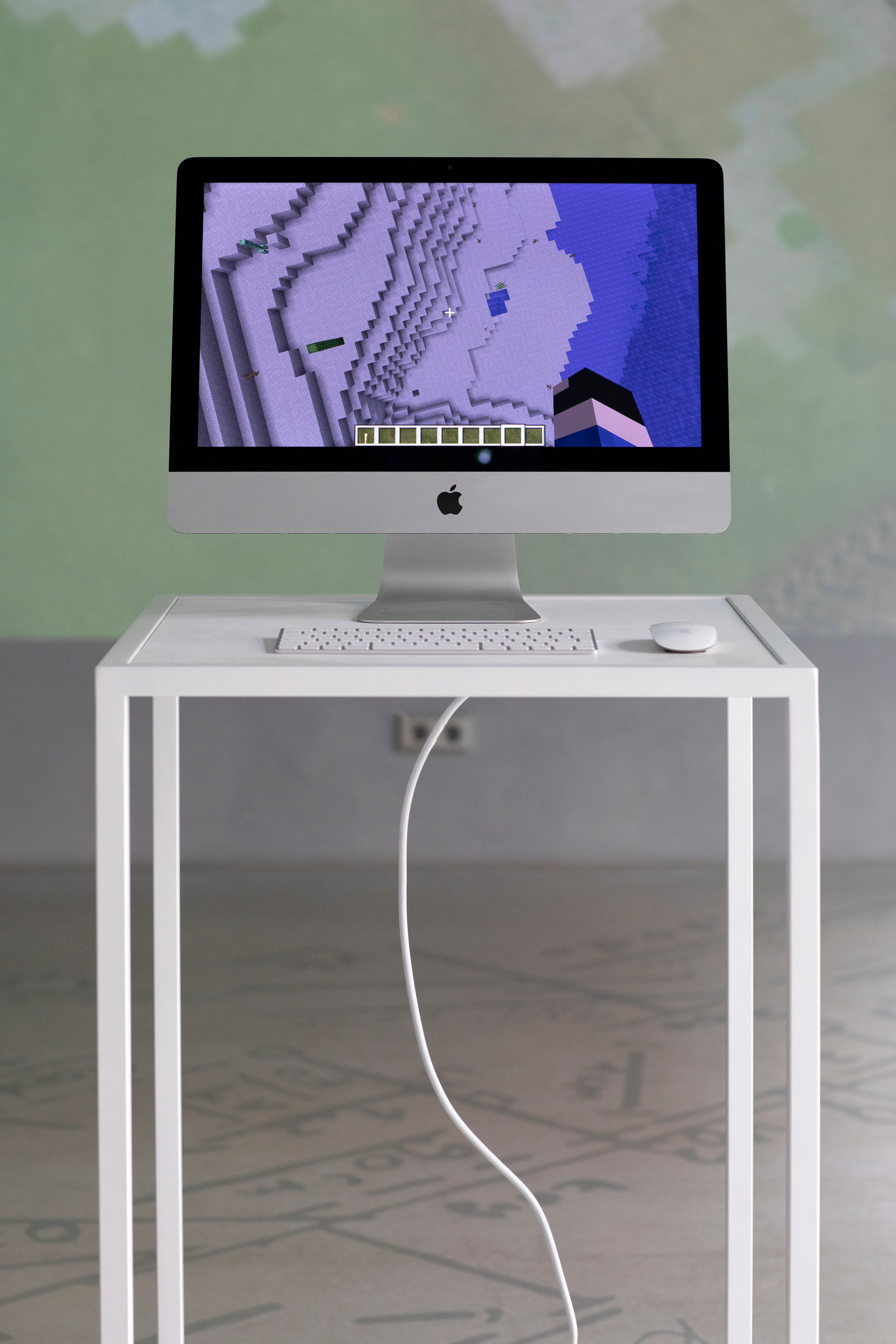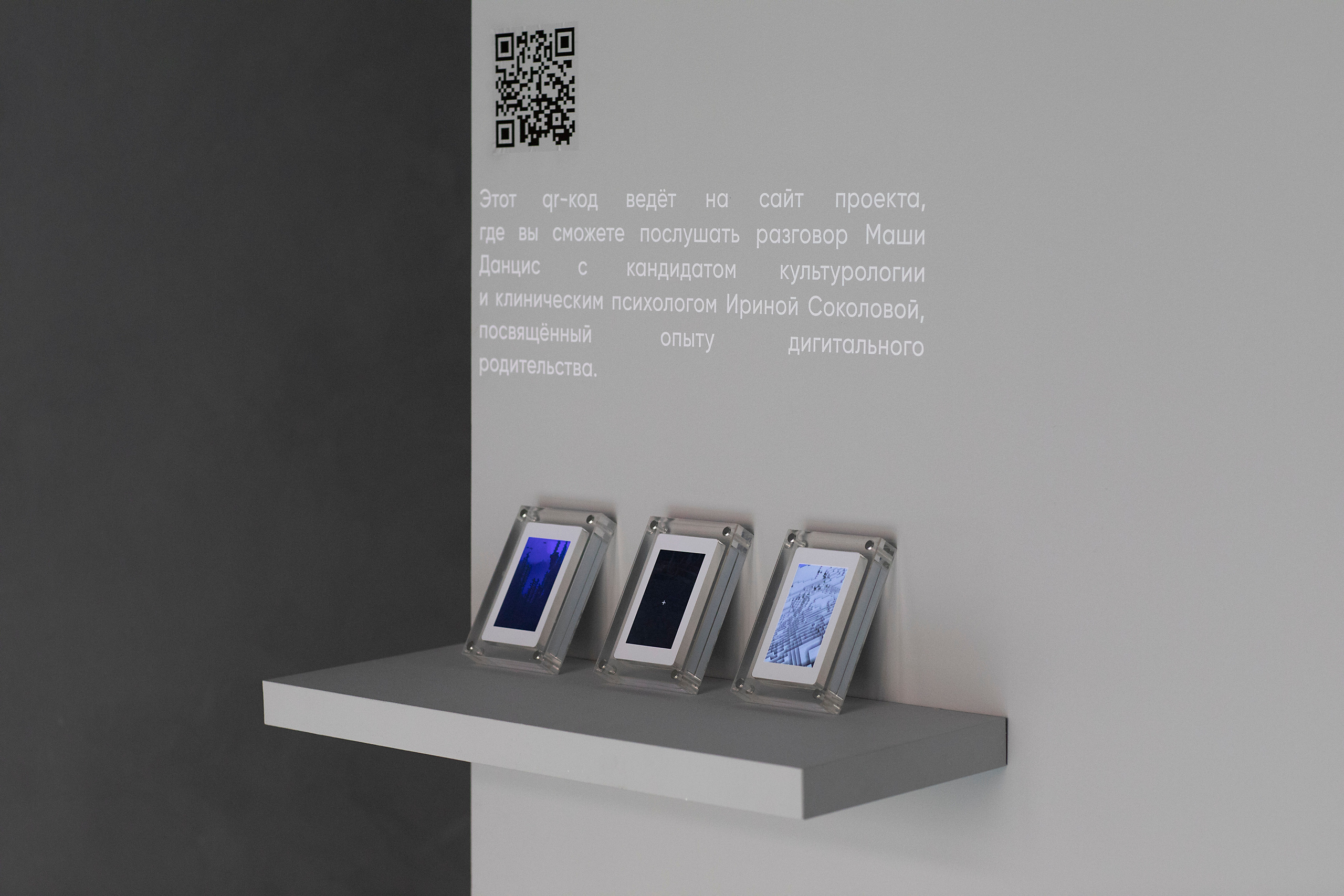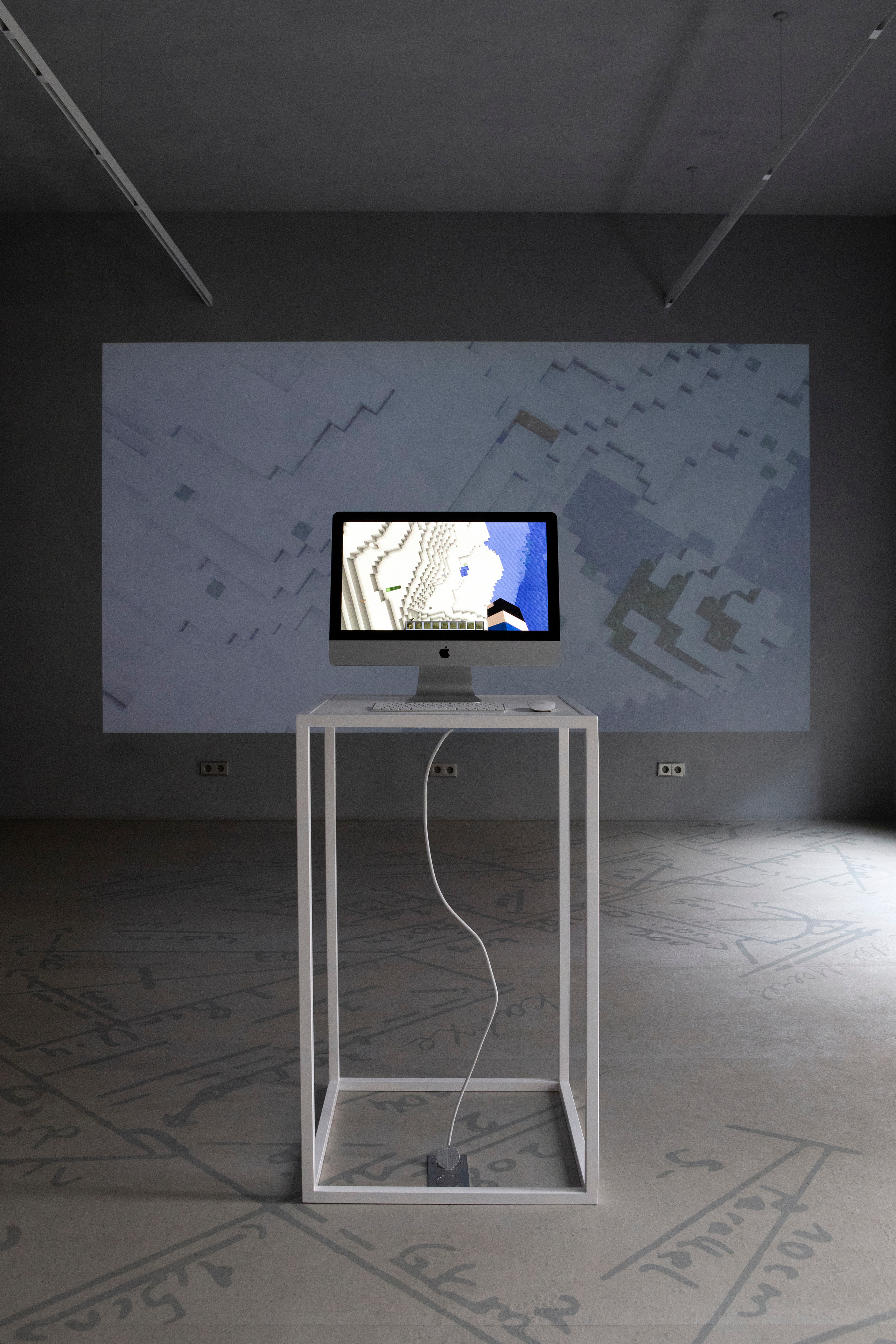
the motherboard
'The Motherboard' is a solo exhibition by Mascha Danzis, which explores the experience of digital motherhood and tells the story of the relationship between the artist and her son, who, separated from each other by closed borders due to a pandemic, began playing Minecraft. They built houses and planted gardens, raised sheep and fished. This digital world gave them the opportunity to be together from a distance. Through this communication, Mascha noticed that their relationship had transformed. They had new patterns of behavior. They had bonded on a different, more sincere and candid level.
'The Motherboard' continues a series of projects in which the artist overcomes the alienation between technology and the human by addressing the experience of family and her own identity. Danzis invites you to visit the digital home she created with her son, see albums of photos of their online lives, and videos of the stories that happened to them.
curatorial statement
Minecraft is a computer video game released by Swedish programmer Markus Persson in 2009. The game is a randomly generated constructor in the form of a modifiable three-dimensional world made entirely of cubes. Minecraft does not set any specific goals for the player, but offers freedom of action. For example, you can explore the world, mine diamonds, fight enemies, and more.
The question 'Can Minecraft be art? ' refers to the more general question 'Can videogames be considered art? ' It was a topic that was actively raised by American journalists in 2012, when the Smithsonian American Art Museum opened a major exhibition called ‘The Art of Video Games’ — one of the earliest manifestations of the idea that video games are also art.
While the international state of video games is clear ten years after, the question of the relevance of this genre remains open on the Russian art scene. In November 2019 a bright initiative leading to understanding this phenomenon in the Russian cultural field was launched Garage.Digital platform Garage Digital accumulates the experience of studying contemporary born-digital art as the product of a new type of thinking and living through everyday reality. The platform organizes public and educational programs and provides grants for artists to develop art games. One of such artists in 2022 became Mascha Danzis, an interdisciplinary media artist who explores in her practice the coexistence of the digital environment and technology together with human identity. Special for Garage.Digital she created ‘The Motherboard’, a project exploring the experience of digital motherhood and continuing her series of projects about the artist’s overcoming the detachment between the technology and the human.
In this project Danzis is interested in the social distance between the experience of parenthood and digital media. After all, if you type ‘parenting + Net + computer games’ in a search engine in any language, there will be articles on how to protect the child, to build the right boundaries between them and the Net. Yet, when, due to a pandemic or other social and political cataclysms, real boundaries separate parents and children, it is the Web that becomes the place of freedom, home and the main opportunity to keep in touch.
In 2020, the borders closed and Mascha and her son, who were in different countries, started playing Minecraft online. They built houses and planted gardens, raised sheep and fished. This digital world gave them the opportunity to be together remotely. Through this interaction Masha noticed that their relationship had changed, they had developed new patterns of interaction, and became closer together in a more genuine and honest way.
In this case, unable to return home because of the closed borders, the online video game became a safe place, a new home. In this matrix-like space, it was possible for mother and child to meet, and the co-creative action taking place during the game became one of the most important elements of the Danzis project.
As the Dutch game theorist Johan Heisinga points out, one of the main properties of a game are the rules that shape the world of the ‘game space’. As soon as one breaks the rules, this world immediately collapses. There is no game anymore. Game establishes order and is the order itself. Game demands absolute and complete order. It forms the circumstances given and the rules according to which we must act in those circumstances, forms a kind of complete unpredictability, one might say. Because of this, a great deal of energy is released during the game, and we can use it to refine our interpersonal relationships and to share our experiences together. This mechanism allows us to form a certain type of action in which there is no tension, unlike the standard parent-child dialogue.
Thus, in ‘The Motherboard’ Danzis continues to explore the question of the essence of technology as such, as well as tries to overcome the alienation that lies in the functional use of technology by humans. This artistic vision is based on the concept of the French philosopher Gilbert Simondon to a great extent. He believed that it is not technology that enslaves and alienates the human. On the contrary, the human enslaves and alienates technology from everything human through the utilitarian approach, alienating themself, as a result. Therefore, it is not the human that must be liberated from machines, but machines must be liberated from the human — something Danzis strives to achieve in her works.
In her project, the technology of online gaming turns into a co-creator of the artwork and an agent of influence. The artist provides a space for technology to realize abilities that one cannot register, for example, to construct the territory of family experience (an important theme for Danzis, which appears in her other projects as well). That is why the artist’s works are so vividly marked by an appeal to techno-aesthetics, where sensual cognition is carried out through technological systems, materials and processes. Danzis allows us to see technology not only as an applied tool, but also as a kind of crutch that enables one to ‘be human' and helps to create a desired imaginary reality.
exhibition photo: Alisa Gil
coauthors of the project: Jonathan Volk, Irina Sokolova
design: Boremir Bakharev, Elizaveta Belova, Ekaterina Fefilovagallery
gallery team: Anna Zavediy, Ksenia Gorlanova, Alexander Pogrebnyak, Dasha Zakharova
gallery founder: Polina Bondareva
special thanks for the help in the realization to the National Research University Higher School of Economics and personally to Mitya Kharshak, as well as to the brave students of Mascha Danzis
Masters Digital Gallery
Saint Petersburg, 2023.


